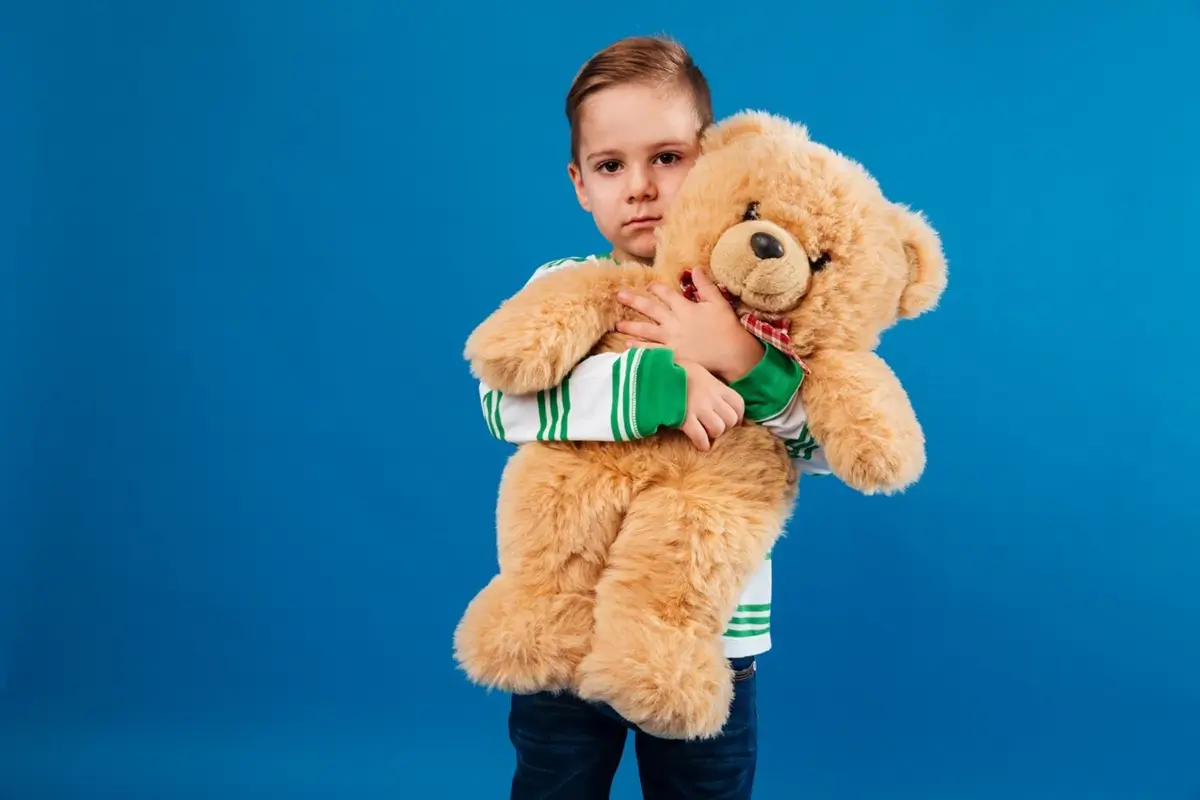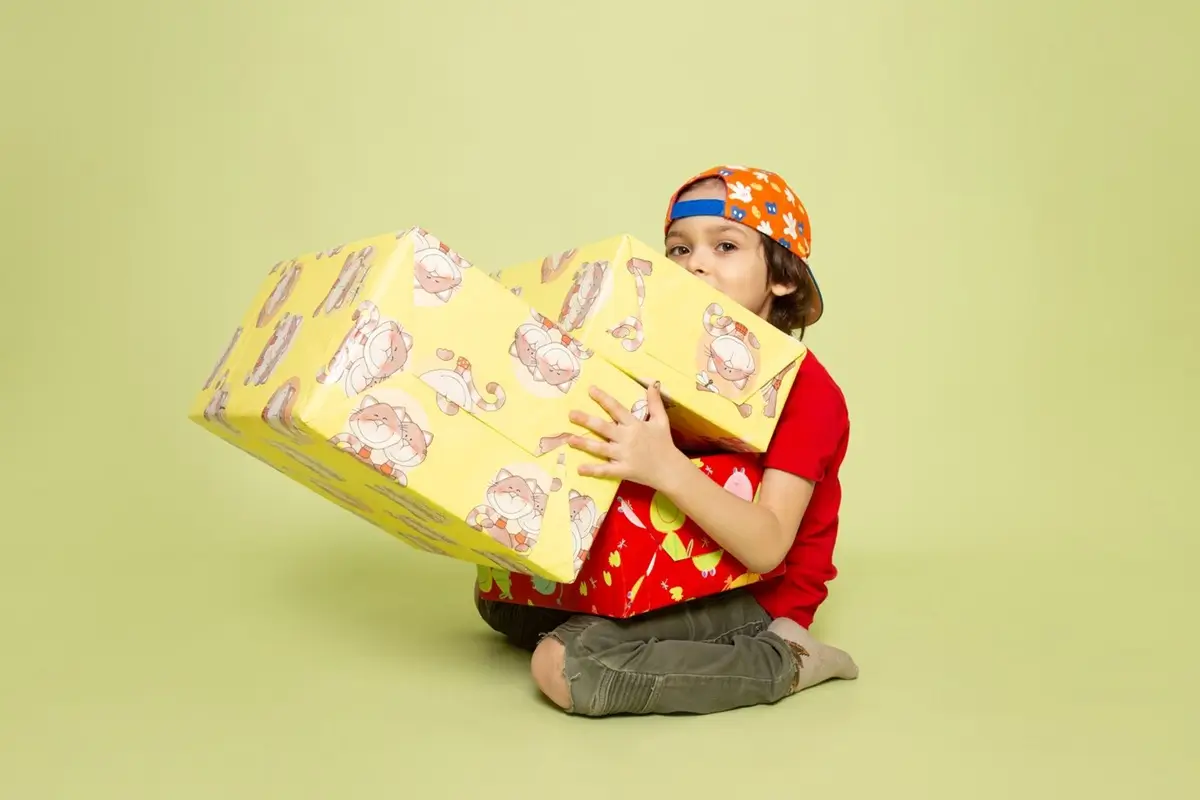Why It’s Important to Choose an Appropriate Gift for a Child
Childhood is a time of bright emotions, genuine joy, and impressions that remain in memory for life. Every gift a child receives is not just an object but a whole event capable of evoking delight, surprise, or even becoming a source of inspiration. Children perceive the world differently: for them, not only functionality and practicality matter, but also the emotions the gift brings.
A well-chosen gift can become part of happy memories, influence a child’s interests, or even aid their development. Conversely, a thoughtless choice can leave disappointment or the feeling that their desires don’t matter. That is why it’s so important to approach gift selection consciously.

How to Determine a Child’s Interests and Needs
Choosing a birthday gift for a child is not just a formality but an opportunity to show attention to their inner world. From the very first days of life you, more than anyone, observe their development, notice what genuinely excites them and what leaves them indifferent. These observations are the key to understanding their true interests. A child may not always express their desires in words, but their games, questions, even how they look at shop windows—all these are clues for an attentive adult.
At an early age, children often become fascinated by things that give them new tactile or auditory sensations: rattles, soft toys, musical instruments. As they grow, their preferences become more conscious: one child draws for hours, another delightedly assembles construction sets, a third enacts entire stories with figurines. It’s important not merely to buy a “popular” toy but to choose something that matches their current developmental stage and individual inclinations. After all, a gift is not just an object but a way to support their natural drive to explore the world.
Keep in mind that children’s interests can change quite rapidly—what thrilled them a month ago may be forgotten today. Therefore, it’s useful from time to time to unobtrusively ask the child about their dreams, browse catalogs or shop windows together, and notice what they share with friends.
Ultimately, the value of a gift is measured not by its price or popularity but by how well it resonates with the child’s inner world. When a little one realizes that adults truly see and respect their preferences, it creates a special feeling of significance.

Gift by Age: Ideas and Recommendations
Choosing a gift for a child is always a balance between their interests and their age-appropriate abilities. What amazes a one-year-old is unlikely to interest a preschooler, and may leave a teenager indifferent. That is why it’s crucial to consider not only the child’s preferences but also their developmental stage.
0–3 Years: Safe and Developmental Gifts
At this age, the world is a vast space of discovery for a child, where every object can become a source of new sensations. The best gifts for toddlers are those that are safe and help develop sensory perception and motor skills. Soft blocks, shape sorters, musical toys, and fabric books with bright pictures—anything they can touch, squish, dismantle, and even mouth. It’s important that materials are non-toxic and parts are large enough to eliminate choking hazards.
3–6 Years: Creative and Motor-Skill Games
Preschoolers are tireless fantasists, and their play becomes more complex and meaningful. At this age, gifts that develop imagination and coordination are especially valuable: finger paints, kinetic sand, modeling sets, simple puzzles, or large-piece construction kits. Role-play toys—dollhouses, doctor kits, or tool sets—are also excellent. Active play items like balls, balance beams, tricycles, or scooters are equally important, helping to expend energy and improve physical fitness.
6–10 Years: Board Games and Construction Sets
Young school-aged children can concentrate on more complex tasks, and their interests become more stable. At this age, board games that teach strategic thinking and interaction— from Monopoly to Jenga—work great. Construction sets like LEGO with smaller pieces or electronic kits for simple experiments awaken interest in science and technology. Creative kits—such as woodburning, beadwork, or art sets—are also a good choice, especially if the child already shows a knack for crafts.
10–14 Years: Gadgets and Educational Kits
Adolescence is a time of self-discovery, and gifts can help in this journey. Gadgets (smartwatches, headphones, portable speakers) or accessories for them are almost always appropriate, but educational kits—programming sets, robotics kits, or microscopes for young researchers—are just as valuable. Sports equipment (skateboards, badminton rackets, fitness bands) supports an active lifestyle, while books or group board games aid socialization. The key is to avoid gifts that feel too “childish,” since at this age it’s important to be treated like a young adult.
14–18 Years: Hobby-Oriented and Stylish Gifts
Older teens appreciate gifts that reflect their personality. This could be something related to a hobby—high-quality art supplies, a musical instrument, or a master-class voucher. Stylish accessories (backpacks, jewelry, trendy thermoses) or tech items (graphics tablets, action cameras) are also fitting. If their interests aren’t yet defined, choose something from fashion or cosmetics—but first, discreetly find out their tastes.
Popular Gift Categories for Children
What to give a child? When selecting a gift, it’s important to consider not only their age but also their area of interest. Today’s range of children’s products is so diverse that you can easily find an option that will not just delight but also benefit development.
Educational and Developmental Toys
For toddlers, shape sorters, stacking rings, and interactive panels that train logic and fine motor skills are suitable. Preschoolers will enjoy sets for learning letters, numbers, or basic physics and chemistry in a playful format. School-aged children can be offered more advanced options—electronic construction kits, microscopes, or programmable robots. Such toys both entertain and spark interest in STEM fields.
Creative Kits (Art, Crafts)
If a child loves making things with their hands, creative kits are an ideal gift. Young artists will appreciate easels, quality paints, or wood-and-fabric painting sets. For those into crafts, consider embroidery kits, knitting sets, jewelry-making supplies, or modeling clay. Such gifts foster patience, artistic taste, and imagination—and yield a finished product that the child can proudly display.
Sports Equipment and Active Games
For energetic children who can’t sit still, a gift tied to physical activity is perfect. Toddlers will love balls, ride-on toys, or small trampolines; older kids enjoy bicycles, scooters, rollerblades, or badminton sets. In winter, sleds, sledges, or ice skates are especially timely.
Books and Tabletop Puzzles
Books remain one of the best gifts for children of any age. Toddlers benefit from colorful board books with interactive elements; school-aged kids will dive into engaging encyclopedias, adventure stories, or fantasy novels. Tabletop puzzles—jigsaws, chess, or logic games—develop thinking, memory, and attention, while also providing quality family or friend time.
Gadgets and Electronic Devices
In the digital era, children master technology early. Useful gifts can include smartwatches with GPS trackers, child-friendly tablets loaded with educational apps, wireless headphones, or portable speakers. For teens into vlogging or photography, action cameras or graphics tablets are excellent choices.

Common Mistakes When Choosing a Child’s Gift
Many parents, relatives, and family friends, wishing to please a child, sometimes make unfortunate errors that turn an eagerly awaited surprise into disappointment. Most mistakes stem from ignoring age-appropriateness, the child’s interests, or basic safety requirements. To ensure the gift truly becomes a pleasant and useful item, avoid these common pitfalls:
- Ignoring age restrictions;
- Neglecting the child’s interests and personality;
- Cutting corners on safety;
- Excessive practicality;
- Lack of festive packaging.
By avoiding these mistakes, you don’t just hand over another toy—you create a special moment of joy. When a gift matches a child’s age, interests, and individuality, it becomes more than an object: it’s a source of inspiration, new discoveries, and warm memories.
Conclusion: Key Takeaways and Recommendations
If you’re still wondering what to gift a child for their birthday, beyond standard toys and gadgets, consider gift certificates—for example, to creative master classes. A clay-modeling workshop for children is an excellent choice: it develops fine motor skills, imagination, and gives the child a tangible craft to be proud of. But this is far from the only option: painting, soap-making, cooking classes, or even science experiments can all work—what matters most is that the activity aligns with the child’s interests.
The advantage of such a gift is that it offers not just a new toy, but new experiences, impressions, and even useful skills. The child will not only have fun but may also discover new talents within themselves.









